Our Blog - Loire Valley Trip - Chateau Chamerolles
It was built between 1500 and 1530 on the site of an ancient medieval fortress under the authority of Lancelot du Lac, chamberlain to King Louis XII and governor of Orléans, who wished to convert the old structure into a leisure castle. With its polychrome brickwork and open gallery, the château of Chamerolles is reminiscent of the Louis XII wing of the royal château of Blois. Its moats and the outlines of its corner towers hark back to medieval times. It remained in the same family until 1672.
It was occupied and ransacked during WWII, and then was put up for sale in 1970. Seems nobody was in the market for an abandoned chateau that had fallen into ruins, and it eventually became property of the government. It took 5 years of work to bring it back to life. A portion of the castle now houses a perfume museum.
The architecture is a little interesting (and it seems like the outside could use a good washing!). It was built on the site of an old fortified house and retains a bit of the traditional form of a medieval fortress. Inside the gatehouse is a gatehouse with a bridge going over the moat. On the corners are round towers, but then the rest of the house is more Renaissance in nature.
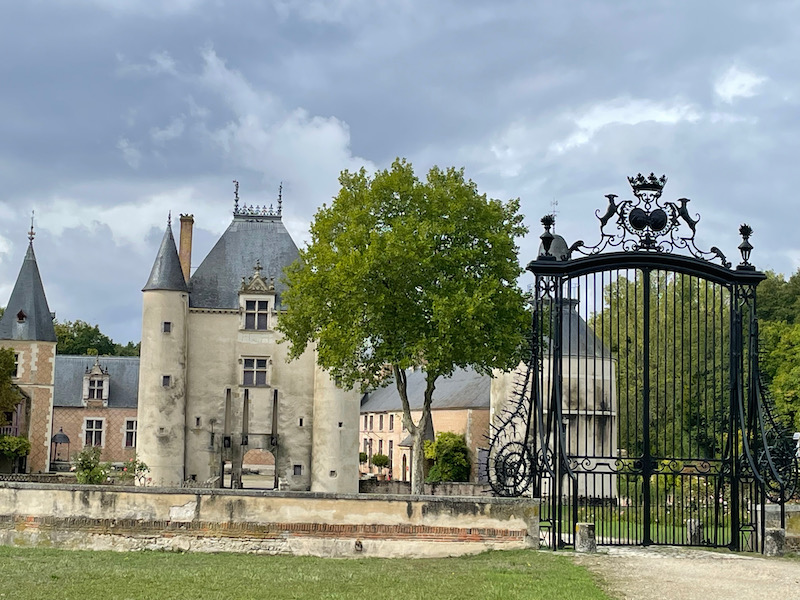
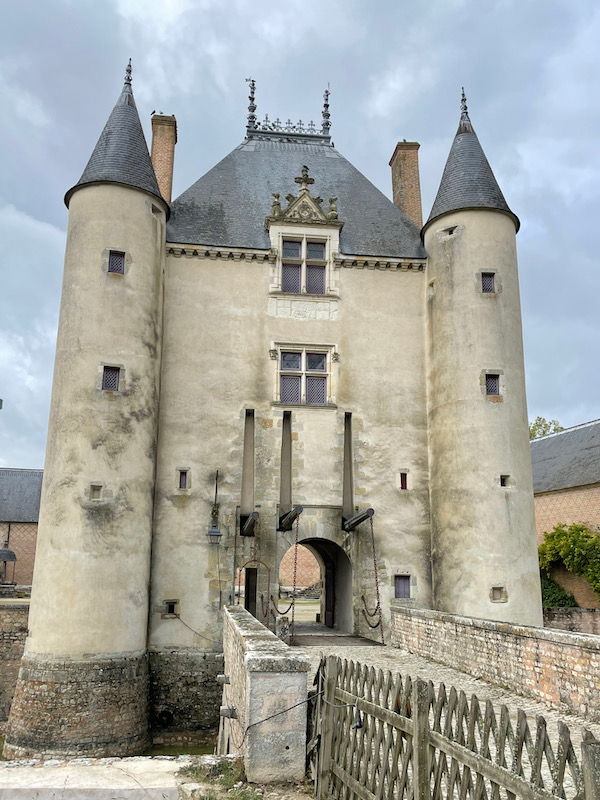
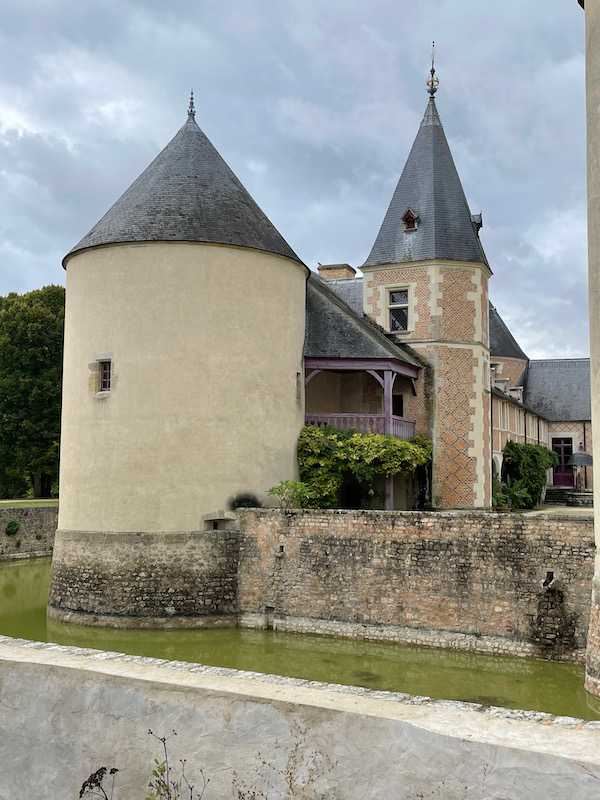
From inside the courtyard, you have the right-hand wing, the central section, and the left wing. If you look closely, the red bricks are interlaced with black stones, which is typical in the Loire Valley.
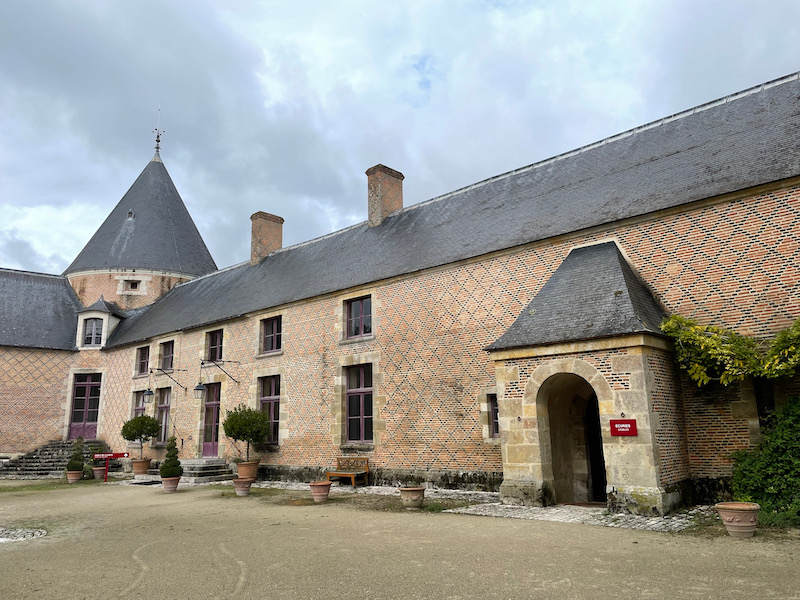
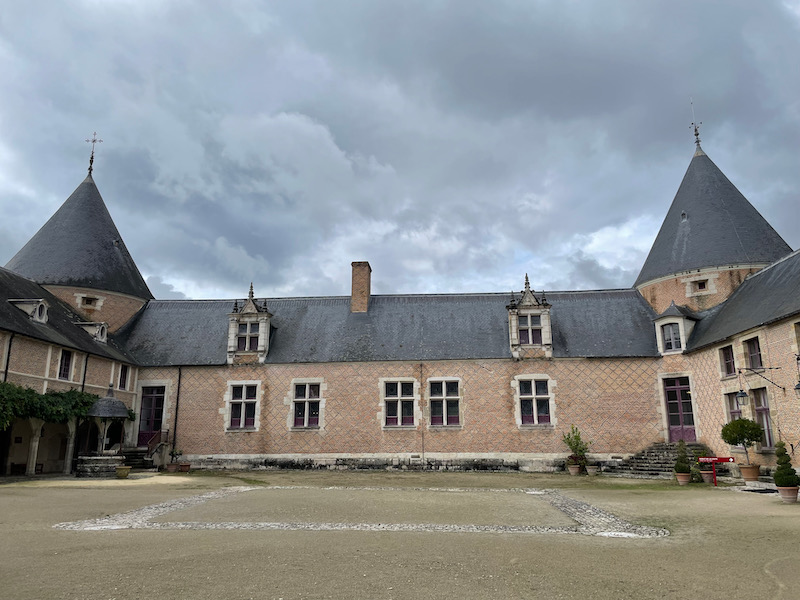
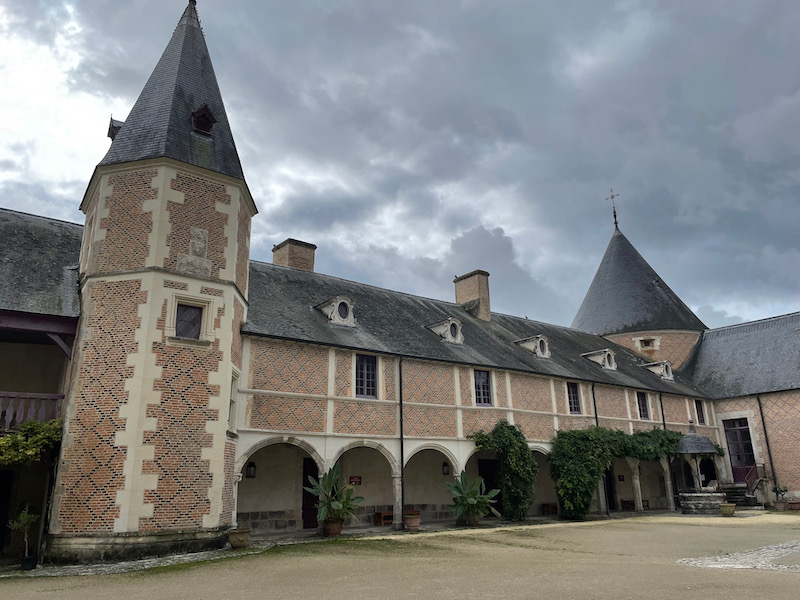
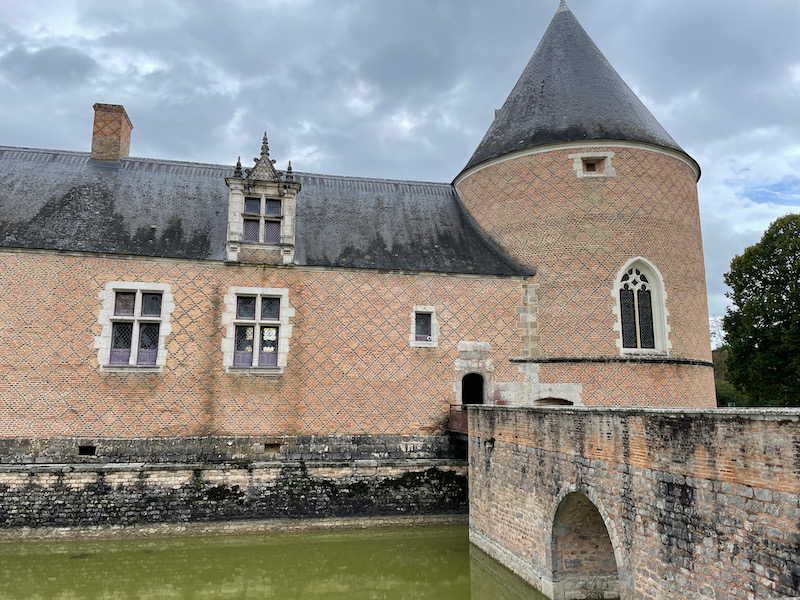
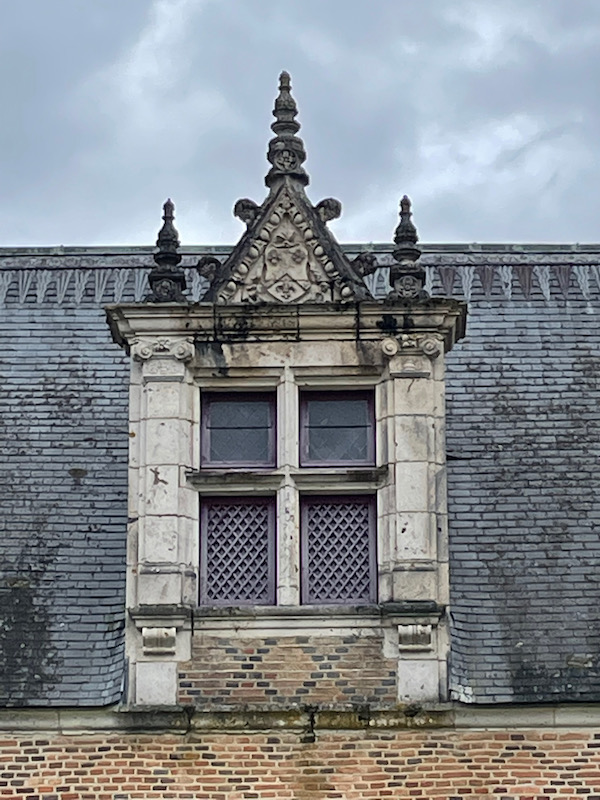
The vestibule was pretty rare until the Renaissance when it became a common thing in large chateaus. The decor in this room is from the 19th century, with imitation marble on the walls.
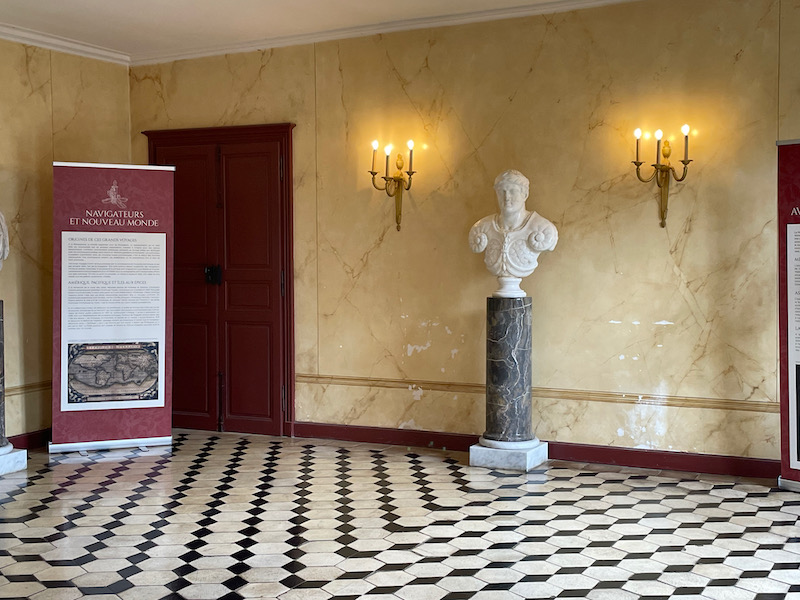
This 18th century drawing room, called the yellow drawing room, shows a bit of how high society in the 18th century would entertain itself. There are various tables with games on them, and longer lounge-type chairs. One interesting type of chair here is called a "voyeuses" and they have a small shelf on the back where guests could rest their elbows on, standing behind the players, to watch the game.
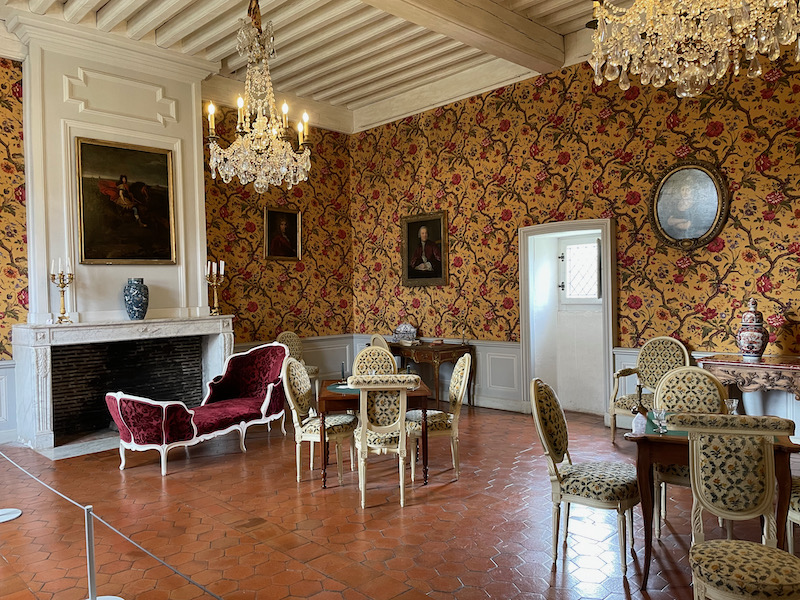
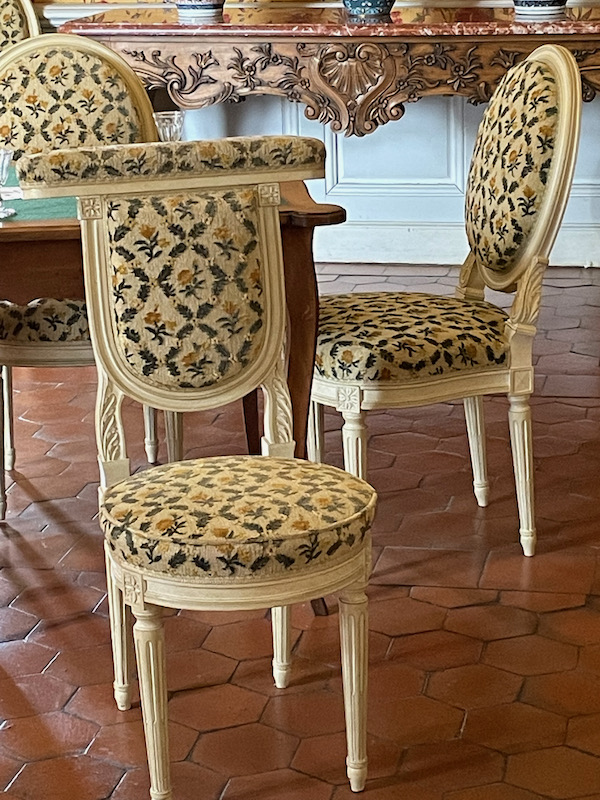
Another drawing room ... in many cases, some of these rooms would have had very little, if any, furniture in them. As the monarchs and lords traveled around the countryside (with their court, of course) to see their subjects, they would stay at various chateaus. The cortege would transport furniture, tapestries, and even dinnerware around with them as they went from place to place.
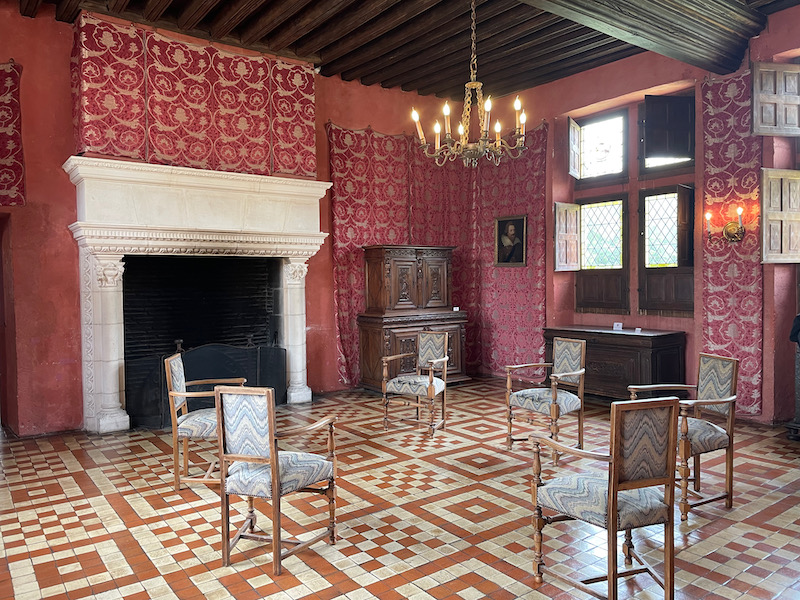
A couple close-ups ... this first picture is the sculpted edge of the fireplace. Then the coat of arms in the window ... the porcupine is the coat of arms of King Louis XII.
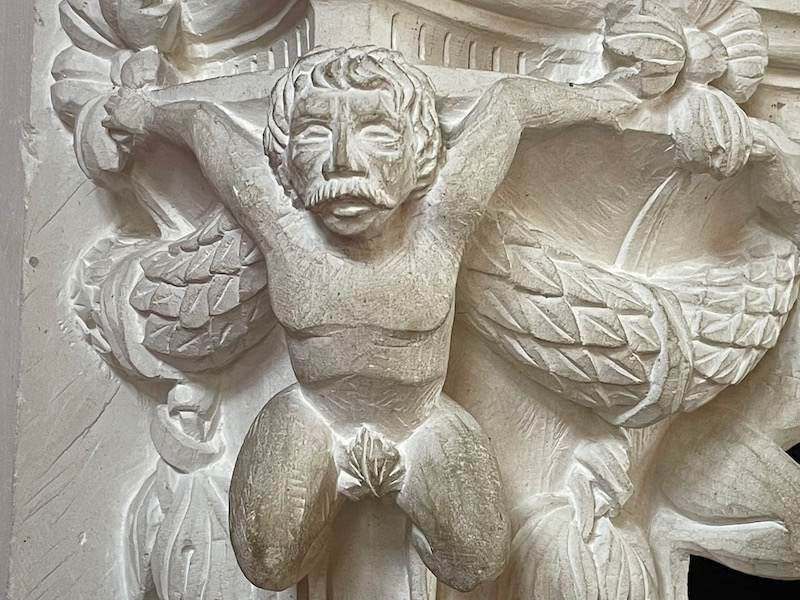
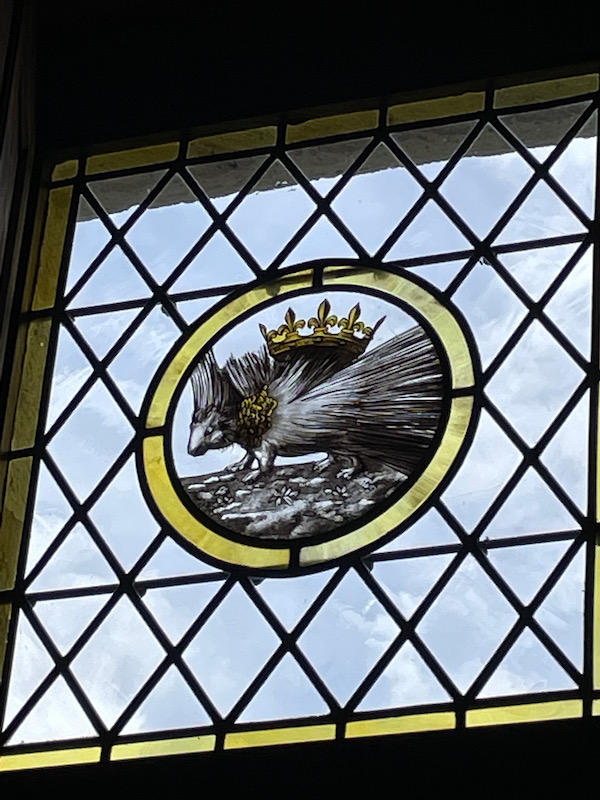
Every castle needs its own chapel, although this one is fairly small. It was built between 1500 and 1530 by the first Lord Lancelot du Lac. His grandson, Lancelot II, turned it into a Protestant temple. These first pictures are from a wooden gallery that was added in 1787.
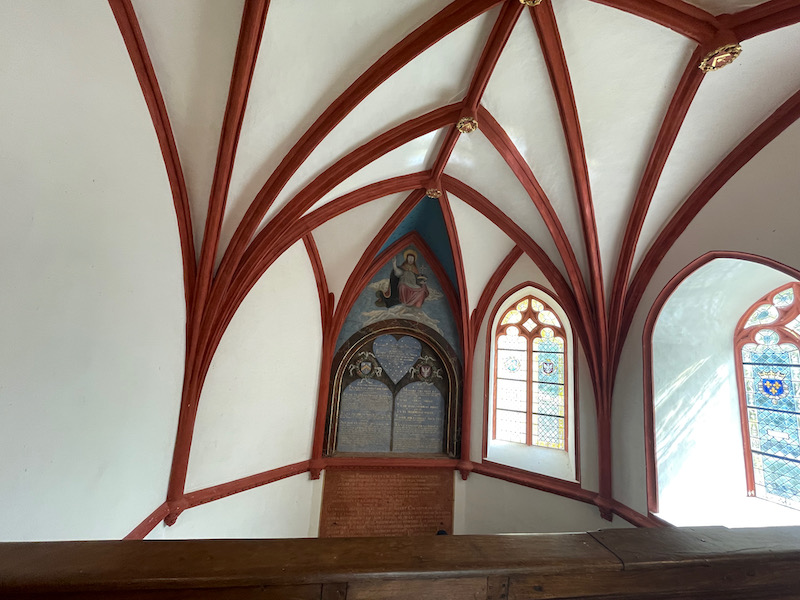
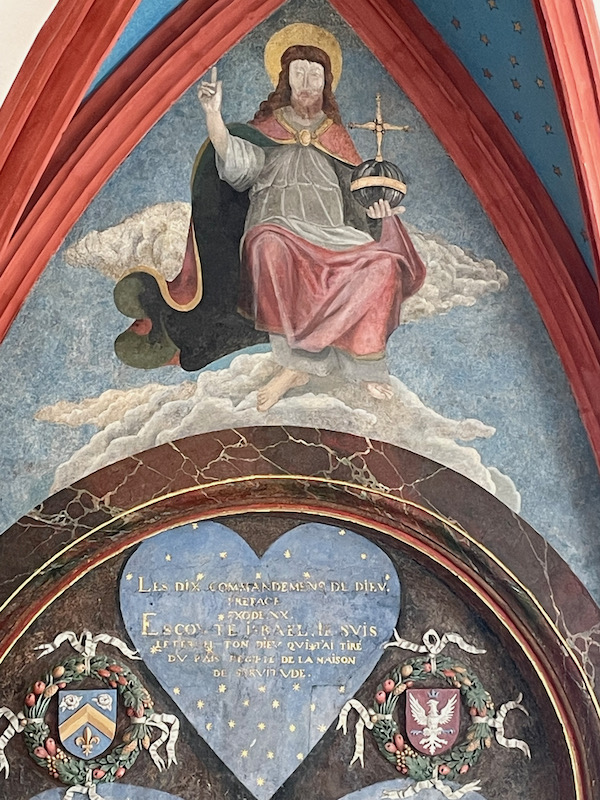
Back in the 16th century, the bedroom was not just for sleeping. They would also eat meals here, receive guests, and bathe. Bathing is one of the things that changed throughout the centuries. Still in the 16th century, people would take long soaks in a bathing tub, set up near the fireplace. The round, wooden bathtub would have a sheet to protect the bather from splinters. You can also see that it had a little table here, so that he could eat meals while soaking.
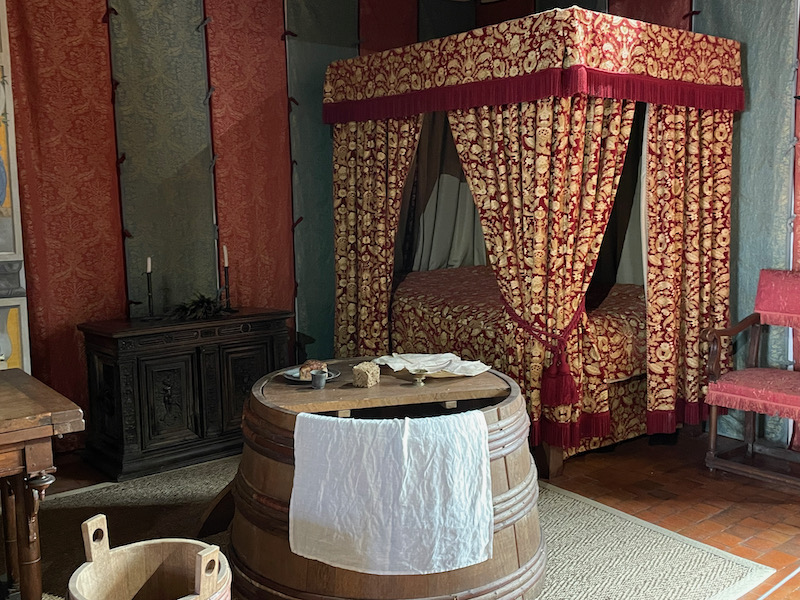
Moving up to the 17th century, you can see that the round bathtub is missing. This is because by the 17th century, people thought that the hot bath water would carry disease and since the heat would open the pores, the disease would then more easily enter the body. A "dry bath" was put into practice, where small pieces of cloth soaked with scented vinegar would be rubbed on the body. This is also when perfume changed from a minor accessory to a heavily-used hygiene product.
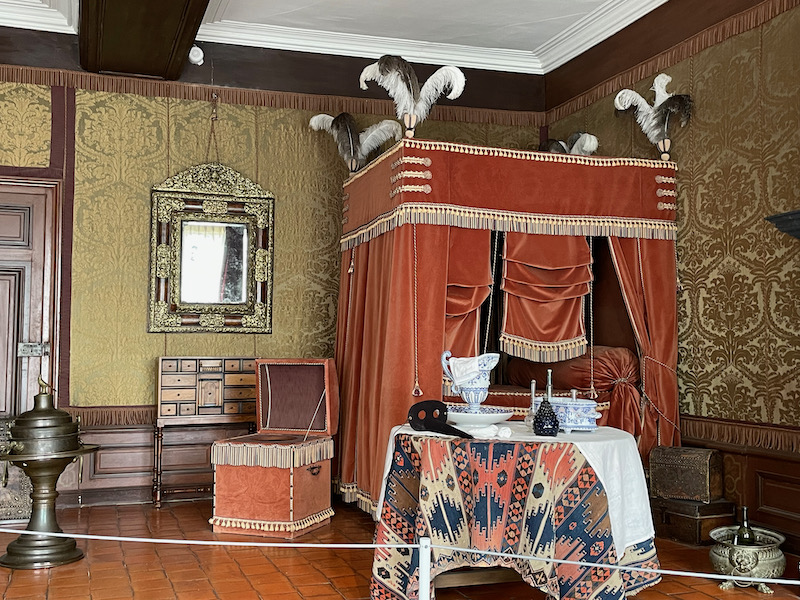
And on to the 18th century, when bathing came back into popularity. Ladies would actually receive guests while sitting in the bath (you can see it here in the front, the metal tub covered with a sheet with the chair attached.
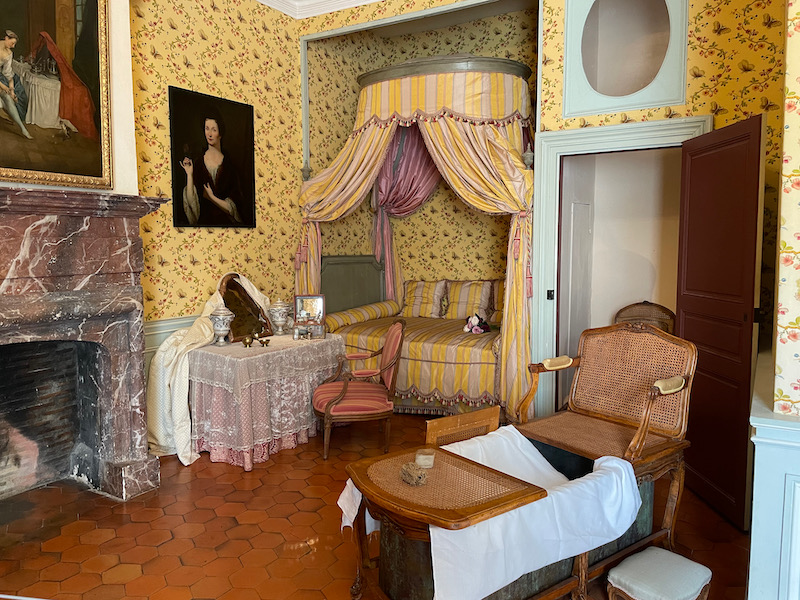
And just a couple things from the perfume museum, which shows how perfume making came into being and the change in what fragrances were "the rage". This first picture shows a laboratory, with a furnace that heats up the liquid and scent object (like flowers or herbs) in the bottom glass section. The vapor then moves up, condenses, and then the liquid runs down a long spout where it is collected.
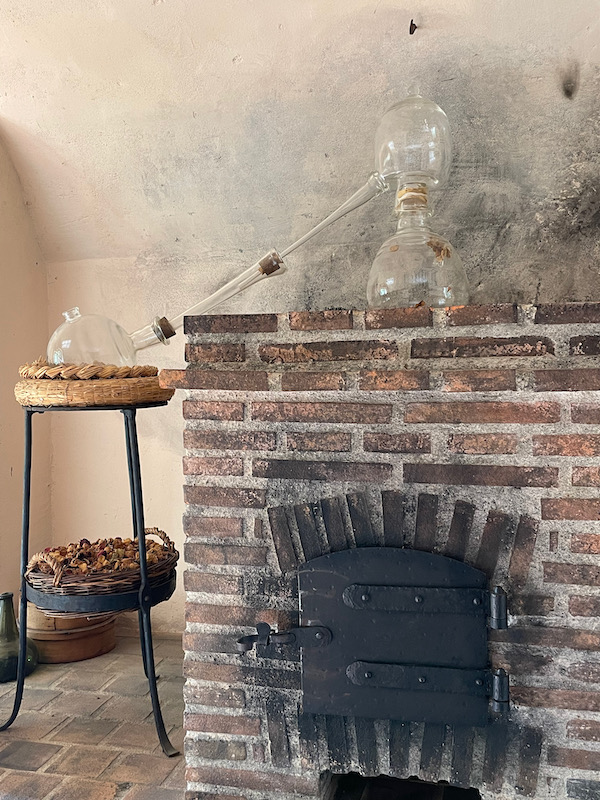
And like today, the shape and color of the perfume bottle was very important. In addition to this small sample, there were 2 rooms with famous bottles from major companies like Guerlain and Dior.
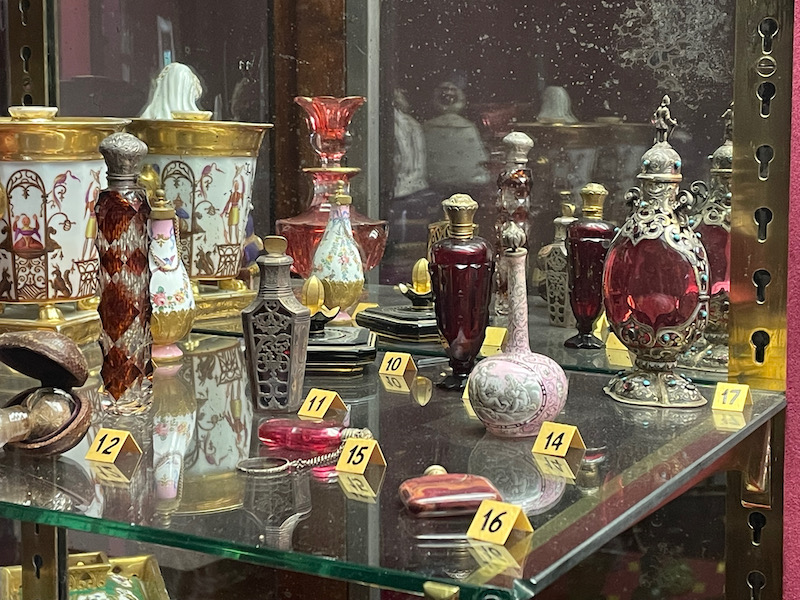
Lucy got to experience the chateau in her new backpack, and it had been a long day for her. She was SOOOOO tired .... she may have actually been able to take a little nap here.
